Advnture Verdict
The Amazfit GTS 4 gives you an awful lot for $200, including lots of features you'd usually expect to cost a premium, such as dual-band GPS and an AMOLED display. It's a pleasure to use as well, with an interface that feels intuitive and polished. Although its physical design isn't too inspiring, Amazfit delivers the goods where it really counts, and this is an easy watch to recommend for beginner to intermediate runners who don't want to splash out on a costly device.
Pros
- +
Affordably priced
- +
Excellent GPS accuracy
- +
Bright AMOLED display
- +
Well crafted interface
Cons
- -
Plain design
- -
Basic recovery metrics
You can trust Advnture
Amazfit GTS 4 first impressions
Like its predecessors, the Amazfit GTS 4 is a sleek, simple-looking GPS sports watch that packs a truly impressive amount of health-tracking tech, plus tools for everyday productivity. It's an excellent all-rounder, and great value if you don't mind its somewhat plain design (in fact, it's top of our guide to the best cheap GPS watches).
The GTS 4 measures 42.7 x 36.5 x 9.9mm (not including the small bulge on the back that holds the optical sensors), and our review unit weighed in at 46.6g including the strap, which is about average for a watch this size,
• List price: £199 / $199.99
• Case size: 49mm
• Weight: 46.6g (including strap)
• Display type: AMOLED
• Water rating: 50 meters
• Best use: Road and track running, cycling, gym workouts
Despite the HR sensor unit standing out from the back of the case, it never feels uncomfortable; in fact, the shape helps the sensors make better contact with your skin.
The midcase is made from aluminum, with a plastic back and tempered glass lens. It's available in four colors: Infinite Black (shown here) Rosebud Pink, and Misty White with fluoroelastomer straps, and Autumn Brown with a woven nylon band. It fastens with an aluminum buckle, designed so the tail of the strap tucks inside against your wrist.
The watch has a water resistance rating of 5ATM, which means it's fine for hand-washing and shallow water swimming, but not suitable for diving or high-speed watersports (no jet skis).
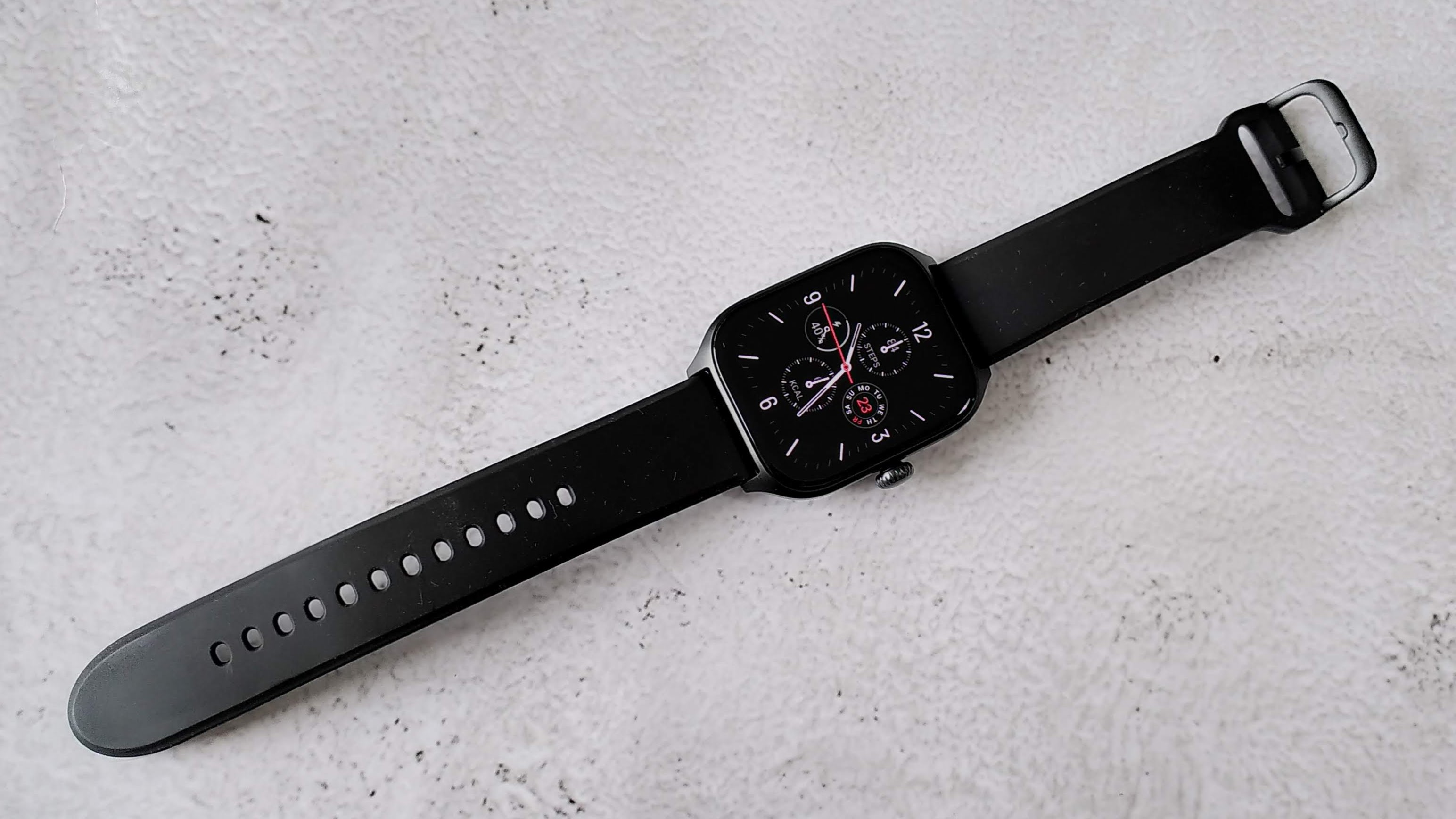
It's controlled using a touchscreen that feels impressively smooth and responsive, plus a crown dial/button on the right edge of the case. The crown isn't quite as chunky as that of the Apple Watch Ultra, but it's easy to grip with cold, wet, or gloved hands.
Regular runners and cyclists might prefer multiple physical buttons, but the crown doesn't present any surprises. During a workout, pressing it will pause your activity and present you with various options. Pressing it again will resume tracking.
All the latest inspiration, tips and guides to help you plan your next Advnture!
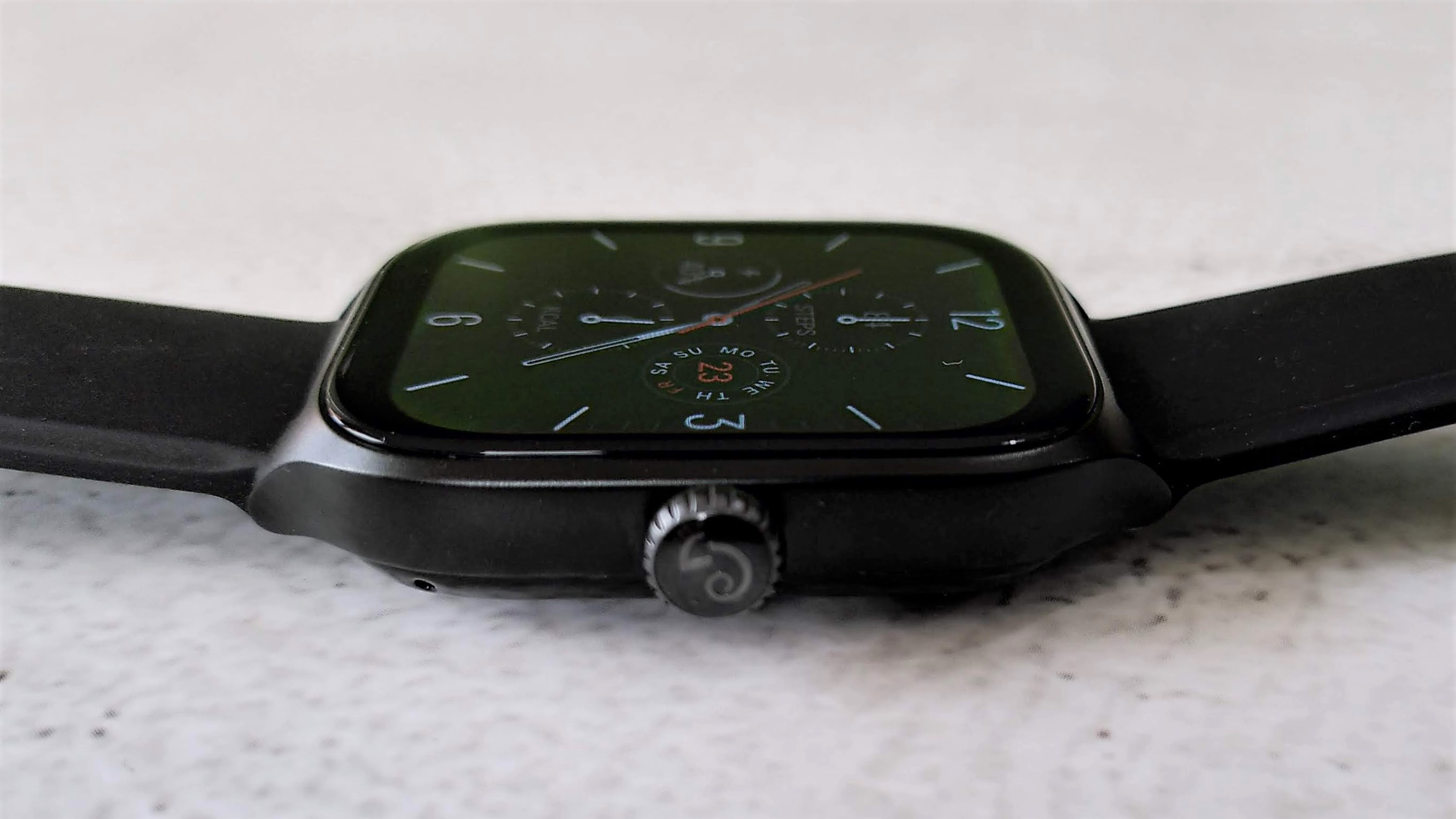
When you're not working out, pressing the crown allows you to browse through a pretty extensive list of apps. There are no third-party apps to download, which is a shame, but it comes with a music player, camera remote, Pomodoro timer for productivity, to-do list app, and voice memos all preinstalled.
You can also play music stored on the watch, or use it as a remote control for your phone's music player. No more fiddling with your handset mid-run to switch tracks.
The real star here, however, is the screen, Unlike most watches in its price category, the Amazfit GTS 4 is packing a color AMOLED display measuring 1.75in diagonally. It's extremely impressive in use, packing masses of data on screen at once, with bright colors and smooth animations. It's certainly not the type of display you'd expect to find on a watch costing $200.
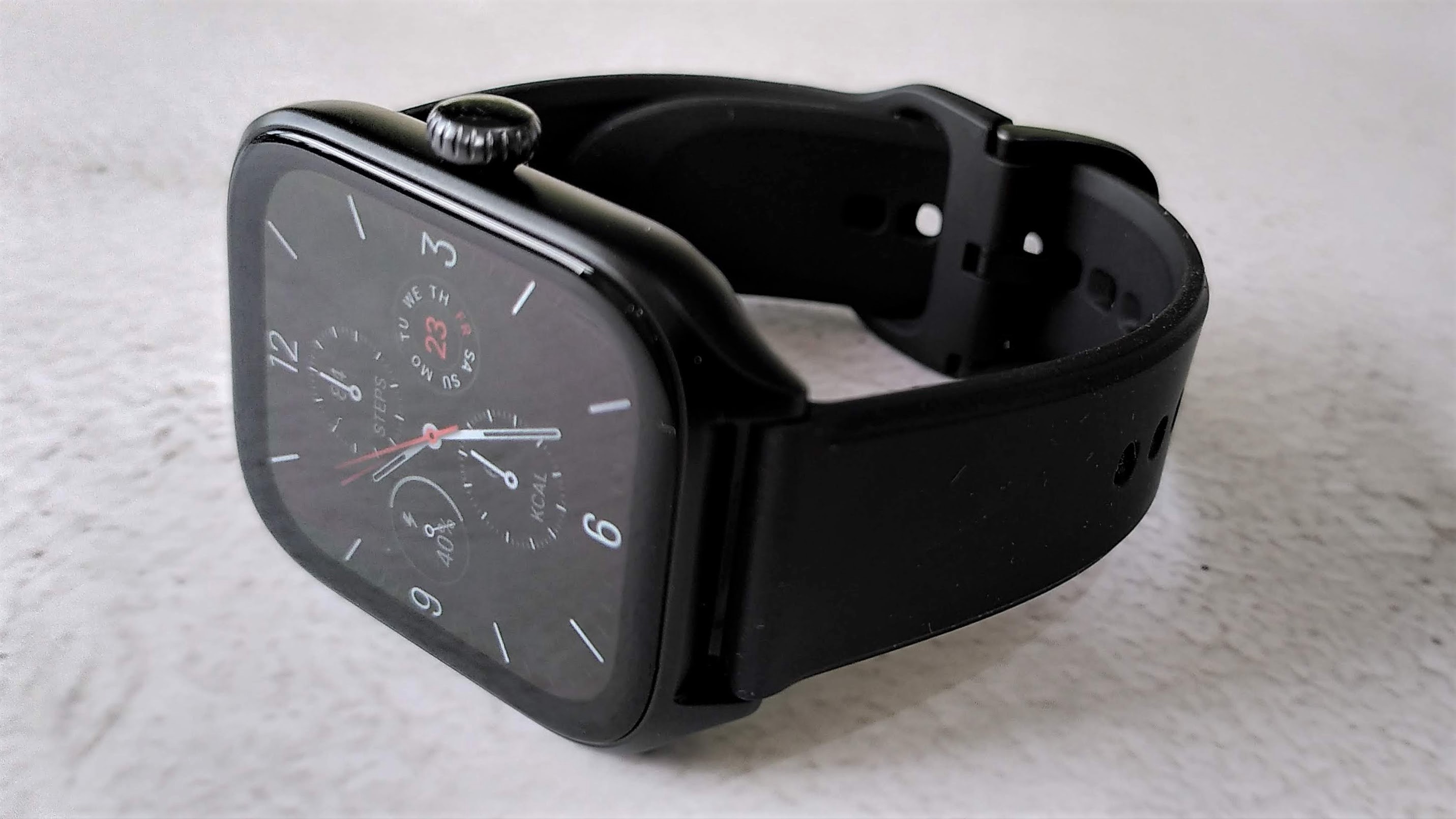
There's no LTE connectivity for making calls without your phone, but the GTS 4 does have a microphone for use with Amazon Alexa voice controls. Just hold the crown button down, then speak away. Again, it's a tool I wouldn't normally expect to find on a $200 watch.
Amazfit GTS 4 on the road
The Amazfit GTS 4 is refreshingly simple to use, with the full range of productivity and health-monitoring tools available at the press of the crown, A reassuring little jolt of haptic feedback makes scrolling through menus feel surprisingly tactile, and the overall experience is nicely polished,
The watch offers a huge array of workout tracking modes (over 100, in fact) but some of these are basically for show, only measuring time and heart rate. However, the GTS 4 can detect several workout types automatically, and really comes into its own for outdoor running.

The Amazfit GTS 4 offers dual-band GPS, and in my tests it produced results on a par with a much more expensive Garmin watch. In my pre-measured 5km run, it was accurate to within 50m, which could be accounted for by the fact that the course was plotted along roads rather than a racetrack.
I've yet to try it, but it has an interesting feature that detects when you're running circuits and automatically course-corrects the recorded route to fit the track. It's an interesting addition that should solve the problem some sports watches have, where GPS drift causes track sessions to appear as an unhelpful, messy tangle.
Although you can't download third-party apps to the watch, you can sync data with Apple Health, Google Fit, and Strava, which is a real boon for runners in particular.
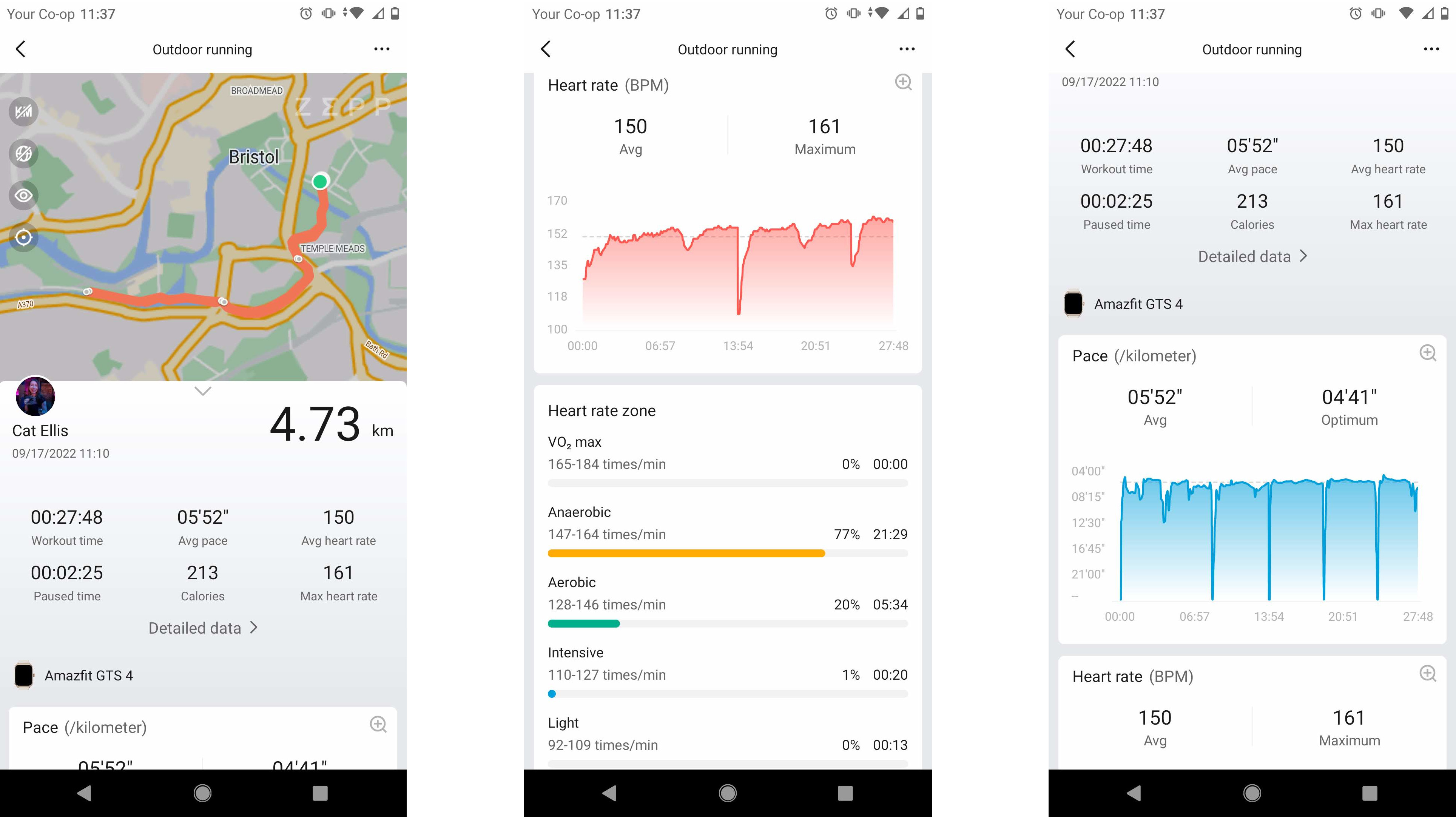
There's no direct compatibility with Komoot, but you can use your phone to import routes created in GPX, TCX, and KML format. This gives the GTS 4 an edge over the similarly styled Garmin Venu Sq 2, though sadly the GTS 4 doesn't come with map packs preinstalled, so your courses are presented as lines on the screen without street names or other details. It's a shame; the GTS 4's screen would be ideal for maps and navigation, but it feels like a bit of a missed opportunity.
That screen doesn't seem to have a big dent in the watch's battery life though, and in my tests I was very impressed by the GTS 4's longevity. Amazfit estimates that a single charge will see you through four days of heavy usage, 16 days in battery saver mode, or 30 days in clock mode. In my tests, these figures proved quite conservative; with a GPS-tracked activity every other day, the GTS 4 lasted almost two weeks between charges.
Activating always-on mode will drain power significantly faster, but the auto-wake feature that activates the screen when you raise your wrist works well enough that you probably won't need it.
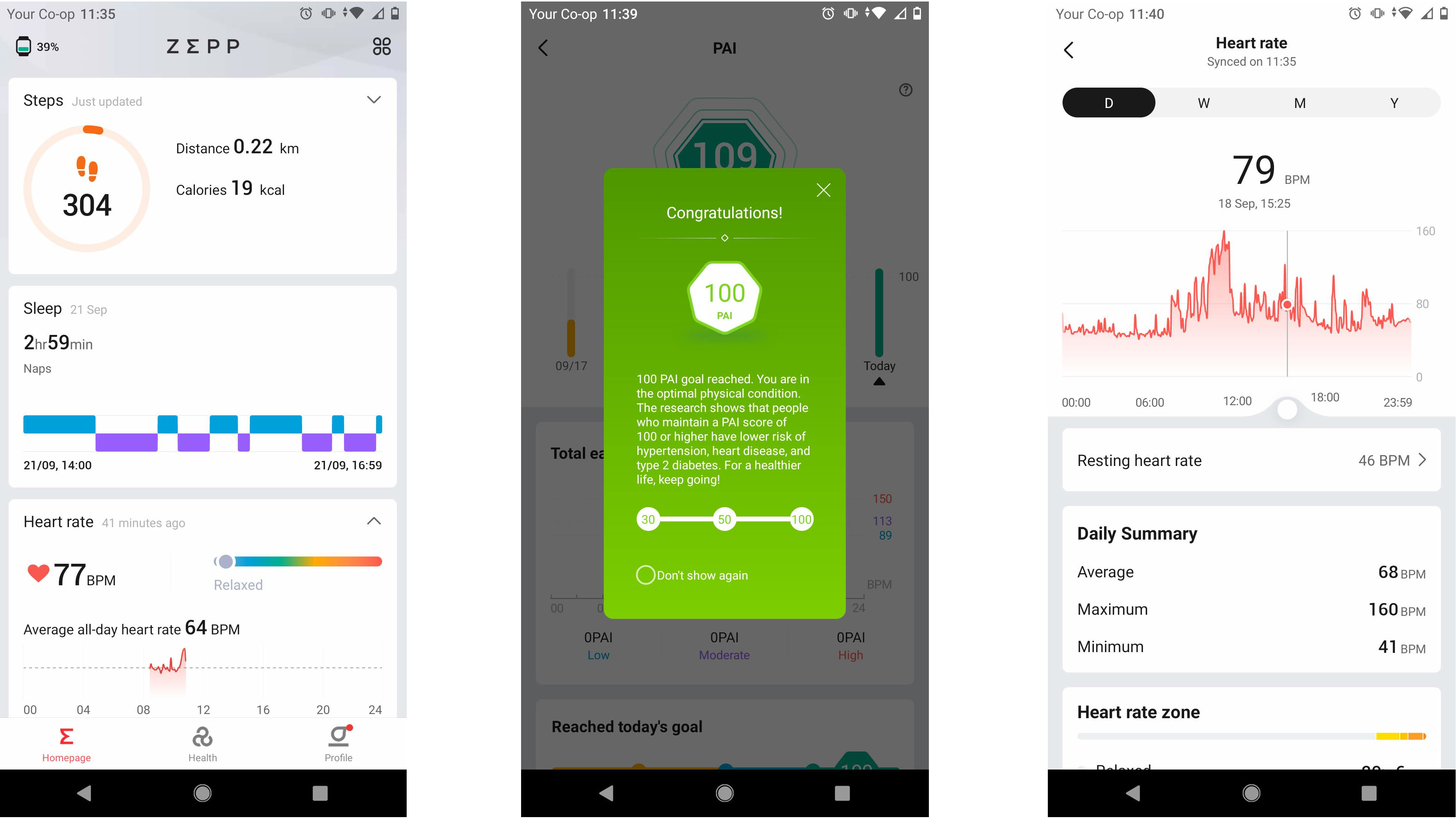
Like all Amazfit watches, the GTS 4 syncs with the Zepp mobile app (Zepp being Amazfit's parent company). This is very well designed, and every health metric is illustrated with graphs, practical advice, and definitions of any specialist terms. Unlike some other fitness apps, there's no assumption of prior knowledge.
If you want a more comprehensive view, you can drill down into the data by tapping through to see detailed graphs. It's worth bearing in mind, however, that you won't get much info on your post-workout recovery. The app will give you an 'exercise capacity' score based on your training load, but it doesn't factor in heart rate variability like Garmin's training readiness tool, for example.
For anyone who's not interested in pushing their performance to the next level and simply wants to develop healthier habits, the Zepp app offers a metric called PAI (Personal Activity Intelligence), which is calculated based on your heart rate. Essentially, raising your heart rate through exercise will increase your PAI, and if you're achieving a score of 100 PAI daily, you're on the right track.
Where we tested the Amazfit GTS 4
I tool the Amazfit GTS 4 on my favorite running route in the city of Bath, which passes through two converted railway tunnels before heading back along a long, flat canal path.

Cat is the editor of Advnture, She’s been a journalist for 15 years, and was fitness and wellbeing editor on TechRadar before joining the Advnture team in 2022. She’s a UK Athletics qualified run leader, and in her spare time enjoys nothing more than lacing up her shoes and hitting the roads and trails (the muddier, the better), usually wearing at least two sports watches.

